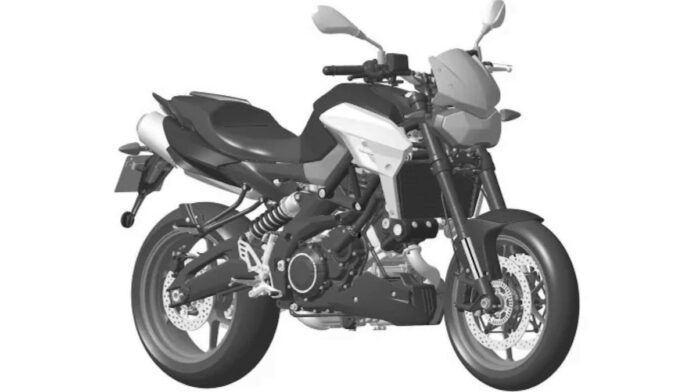Gilera
The revival of the Gilera brand, epitomized by the introduction of the GLR900, is a significant event in the motorcycle industry, representing a blend of historic legacy and modern strategic collaboration. Gilera, with a storied past in motorcycle racing and a later shift towards scooters and commuter bikes under Piaggio, is stepping back into the limelight.
This resurgence is fueled by the joint venture between Italian motorcycle giant Piaggio and Chinese powerhouse Zongshen, forming a crucial alliance in the Zongshen Piaggio Foshan Motorcycle Co. Ltd. The GLR900, a model bearing resemblance to the Aprilia Shiver, emerges as a key player in this revival, raising questions about market strategies, regional focus, and compliance with contemporary emission standards.


GLR900
Gilera is set to make a comeback with a new 900cc motorcycle
- The Italian motorcycle brand Gilera is being revived by Piaggio and Zongshen.
- The new GLR900 motorcycle is based on Aprilia’s Shiver 900.
- The GLR900 will be sold in China, but it is unclear if it will be sold in other markets.
- The revival of Gilera is a sign of the growing Chinese motorcycle market.
Piaggio
Here are some additional details
- The design filings for the GLR900 were posted by Zongshen Piaggio Foshan Motorcycle Co. Ltd, a joint venture between Piaggio and Zongshen.
- The GLR900 is powered by an 896cc engine.
- It is unclear if the GLR900 will meet Euro 5 emissions standards.
- Gilera was absent from EICMA 2023, which suggests that a European launch of the GLR900 is not imminent.
Zongshen
The collaboration between Piaggio and Zongshen through the joint venture Zongshen Piaggio Foshan Motorcycle Co. Ltd is particularly noteworthy. It represents a strategic alliance that combines Piaggio’s rich heritage in motorcycle manufacturing with Zongshen’s robust presence in the Chinese market. This partnership underscores the growing importance of Asian markets in the global motorcycle industry.
Euro 5 Emission Standards
The GLR900, described, seems to be a strategic move to re-enter the performance motorcycle segment, albeit in a way that aligns with current market trends and regulatory requirements. The design similarities between the GLR900 and the discontinued Aprilia Shiver suggest a shared platform strategy, which is a common practice in the automotive and motorcycle industries to reduce costs and streamline production.
However, the decision not to update previous 900cc Aprilia models to meet Euro 5 standards raises questions about the GLR900’s viability in European markets. It seems that the primary focus for the GLR900 will be the Chinese market, at least initially. This strategy could be a test bed for Gilera to gauge the response to a more performance-oriented model under its brand, before considering expansions to other markets.
Market Strategy
The absence of Gilera at EICMA 2023 might indeed indicate that a European launch is not imminent. Yet, this doesn’t preclude the possibility of Gilera making a comeback in Europe at a later stage, especially if the GLR900 garners a positive reception in China and if it’s adapted to meet European standards.
The key aspects of the Gilera brand revival and the introduction of the GLR900 are:
- Historical Context and Brand Legacy: Gilera, with a rich history in motorcycle racing, particularly in the 1950s, shifted focus to scooters and commuter bikes under Piaggio’s ownership since 1969. This transition marked a significant change from its racing roots.
- Piaggio-Zongshen Partnership: The joint venture between Italian Piaggio and Chinese Zongshen, established in 2004, highlights a strategic collaboration that merges Piaggio’s expertise and legacy in motorcycle manufacturing with Zongshen’s strong presence in the Asian market. This partnership is crucial for tapping into new market segments and regions.
- The GLR900 as a Strategic Product: The GLR900 appears to be a strategic move to re-enter the performance motorcycle segment. Its design, closely resembling the discontinued Aprilia Shiver, suggests a shared platform strategy to minimize costs and leverage existing designs.
- Market Focus and Regulatory Challenges: The focus on the Chinese market for the GLR900 is indicative of shifting market strategies, possibly due to the stringent Euro 5 emission standards in Europe. The decision not to update Aprilia’s 900cc models to meet these standards suggests a strategic pivot towards markets with different regulatory environments.
- Potential Implications for the European Market: The absence of Gilera at major European motorcycle shows like EICMA 2023 hints at a delayed or cautious approach towards reintroducing the brand and the GLR900 in Europe. This could be due to regulatory challenges or a strategy to first test the model in the Chinese market.
- Brand Revival Challenges and Opportunities: Reviving a historic brand like Gilera, especially in a competitive and rapidly evolving motorcycle industry, presents both challenges and opportunities. While there is the advantage of a rich legacy and brand recognition, aligning the brand with current market trends, consumer expectations, and regulatory standards is critical for successful re-entry.
- Future Prospects: The success of the GLR900 in China and potential adaptation for other markets will be key indicators of Gilera’s revival strategy’s effectiveness. This could potentially lead to a broader reintroduction of the brand in various global markets, provided the model aligns with regional market demands and regulatory requirements.
Conclusion
The Gilera brand revival, spearheaded by the GLR900, is a complex undertaking involving historical brand value, international collaboration, market-focused strategies, and adaptive product design, all set against the backdrop of a dynamic global motorcycle industry.
The rebirth of Gilera, led by the GLR900, is a fascinating case study in brand revival, international collaboration, and market strategy in the ever-evolving motorcycle industry.
The re-emergence of Gilera, led by the launch of the GLR900, marks a pivotal chapter in the brand’s history, showcasing a strategic blend of legacy and innovation. This venture highlights the importance of international collaboration and market adaptation in the contemporary motorcycle industry. While the primary focus seems to be the Chinese market, largely due to regulatory and market considerations, the potential for Gilera’s expansion into European and other markets remains a topic of keen interest.
The success of this revival effort will hinge on the brand’s ability to navigate regulatory landscapes, align with market trends, and capitalize on its rich racing heritage. The Gilera story, therefore, remains an unfolding narrative, emblematic of the challenges and opportunities inherent in reviving a historic brand in today’s dynamic global market.





































